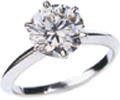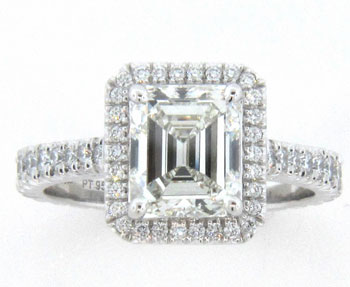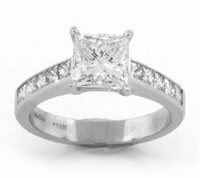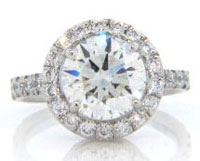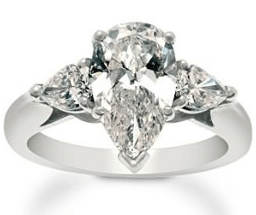Loose Diamonds
Diamond Guides
- The 4 C's and More
- Diamond Shape
- Diamond Cut
- Diamond Color
- Diamond Clarity
- Diamond Carat Size
- GIA Certification
- GIA Cut Grades
Jewelry Guides
- Engagement Ring Guide
- Diamond Tips
- Caring For Your Jewelry
- Tips on Getting Her Ring Size
- How To Build Your Fine Diamond Jewelry Wardrobe
- Diamond & Jewelry Appraisals
- Branded Diamonds
Education Videos
Design Your Engagement Ring
A. Fishman Difference
- Direct Diamond Prices
- Loose Diamond Manufacturer
- A+ Rating From BBB
- Customer Testimonials
- 100% Money Back Guarantee
- FREE FedEx Overnight Shipping
- Lifetime Warranty
- 2% Discount for Bank Wires
- Why No "Shopping Cart"
Expert Guidance
- Expert Guidance
- 212-869-0085
Diamond Buying Tips
Here are a few quick pointers to add to your knowledge of The 4 C's of Cut, Color, Clarity and Carat. But make sure you read the full discussions of these characteristics of a diamond and watch the accompanying videos which will provide you with much more information. Feel free to contact us at 212-869-0085 with any questions you may have.
Diamond Cut
-
The sparkle of a well-cut diamond can actually make it appear larger than one might expect based on carat weight alone.
-
Cut is so important to a diamond's overall beauty, A. Fishman & Son recommends purchasing the highest cut grade within your budget.
-
Poorly cut diamonds will appear dull or glassy, and, in those areas where light leaks out of the bottom of the diamond, may have dark areas.
-
Shape and cut are often used synonymously, but while shape describes a diamond's form, such as round or oval, cut is a grade that refers to a diamond's light return, or, as we generally think of it, sparkle.
-
Diamonds with the highest cut grades cost more, not only because they are rarer, but also because of the skill and experience needed by the diamond cutter to produce such a beautiful stone. In addition, far more time is required to produce a well-cut stone.
Read About Diamond Cuts >
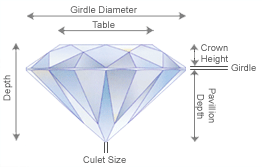
Inferior Cut Diamonds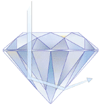
Deep Cut |
Inferior Cut Diamonds Shallow Cut |
Diamond Color
-
The human eye tends to detect sparkle (light performance) before color. This is why color is generally considered the second-most important characteristic of buying a diamond, after cut.
-
As diamond size increases, color becomes more noticeable. This is especially important to keep in mind if purchasing a diamond of two carats or greater.
-
The visible difference between diamonds of one color grade, for example G to H or I to J, is so minor it is difficult to detect with the unaided eye. The cost savings, however, can be significant.
-
Diamond shapes that reflect more light (i.e. have more sparkle), such as round or princess, can mask some color in a diamond
-
The type of metal in which a diamond is set can complement its color. Consider setting diamonds graded I or J in yellow gold. White gold or platinum best complement diamonds with a color grade of D through H.

Diamond Clarity
-
Most imperfections are so small they cannot be seen by the unaided eye.
-
If your budget is tight, it might be possible to purchase a diamond with a visible imperfection, but hide it beneath a ring prong where it will never be seen.
-
As diamond size increases, the size of the facets also increases. Because facets are essentially windows into a diamond, the importance of purchasing a diamond with a higher clarity grade increases.
-
Asscher- and emerald-shaped diamonds are designed with long facets that emphasize transparency over sparkle. For these diamonds, A. Fishman & Son recommends purchasing a diamond with a clarity grade of VS1 or better to ensure the imperfections will not be visible.
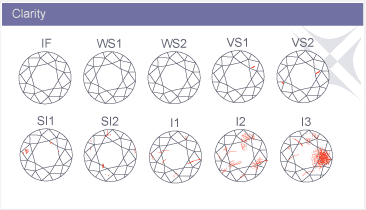
Diamond Carat
-
Carat weight alone will not give you an accurate view of a diamond's size, but should be considered in conjunction with the measure in millimeters across the top of a diamond, and the diamond's cut grade.
-
Diamond prices jump at the full-carat and half-carat marks. To get the best value, look for diamonds just below these sizes, for example purchase a .97-carat diamond instead of a one-carat. Visually, you will not be able to see a difference in size, but your savings can be significant.
Read More >
 |
 |
| 5.00 - 5.55mm | 5.85 - 6.05mm |
 |
 |
| 6.40-6.55mm | 7.45-7.60mm |
|
|
| 8.05-8.20mm |
Loose Diamonds
Shapes of Diamonds
Diamond Videos-New
About our Loose Diamonds
Perfect Diamonds
Pretty Diamonds
Round Cut
Princess Cut
Cushion Cut
Radiant Cut
Emerald Cut
Asscher Cut
Pear Shape
Oval Shape
Marquise Shape
Heart Shape
Diamond Jewelry
Brooches
Bracelets
Earrings
Engagement
Necklaces and Pendants
Wedding Rings
Custom Designed Jewelry
Diamond Guides
Diamond Guide - The 4 C's
Ethics of Lab-Grown Diamonds
Purchase: Beyond the Four C's
Diamond Guide Videos
Engagement Ring Guide
Understanding GIA Certificates
Understanding GIA Cut Grades
Pretty Diamonds
Diamond Clarity Enhancements
Conflict Free Diamonds
Identifying Fake Diamonds
Diamond Tips
Diamond Jewelry Appraisals
Diamond & Jewelry Care
Gift Giving
Beyond the 4 C's
Jewelry and Diamonds to Wear for a Lifetime - Not Just a Season!™
 A. Fishman & Son • 580 Fifth Avenue, Ste 402 • New York, NY 10036 • 212-869-0085
A. Fishman & Son • 580 Fifth Avenue, Ste 402 • New York, NY 10036 • 212-869-0085
Copyright © 2011-2022 A.Fishman & Son. All Rights Reserved. Website by YLWConsulting

